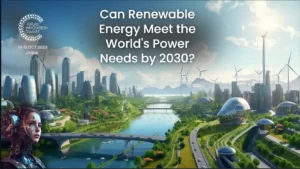Introduction: Zero-Waste Lifestyles
Zero-Waste Lifestyles: The looming threat of climate change and environmental degradation has increasingly driven individuals and communities to reevaluate their consumption habits. The concept of a zero-waste lifestyle is at the forefront of this ecological renaissance. Adopting a zero-waste approach reduces waste and actively conserves resources, drastically minimizing one’s carbon footprint. Here are some practical tips to assist you in embracing a zero-waste lifestyle in 2023.
1. Understand the Basics of Zero Waste:
The main principle behind zero waste is to send nothing to landfills or incinerators. Instead, all materials should be composted, recycled, or reused. It’s not just about reducing your waste—it’s about restructuring an entire system to be more sustainable.
2. Reusable Over Disposable:
- Grocery Bags: One of the most straightforward changes you can make is switching to reusable grocery bags. With numerous stylish and compact options, it’s an effortless way to reduce plastic waste.
- Water Bottles: Instead of buying disposable plastic bottles, invest in a good quality reusable water bottle.
- Coffee Cups: Love your daily coffee? Consider purchasing a reusable coffee cup, which many cafes now happily accommodate.
3. Composting Is Key:
Around 30% of what we throw away can be composted. Start by collecting vegetable scraps, coffee grounds, and eggshells. You’ll be amazed at how much less you’ll throw away, and you’ll create nutrient-rich compost for plants.
4. DIY Household Cleaners:
Many household cleaners can be replaced with natural, homemade alternatives. Common ingredients like vinegar, baking soda, and lemon juice can work wonders, eliminating the need for multiple single-purpose cleaners.
5. Bulk Buying:
Bulk buy stores have increased, allowing you to purchase only what you need. This helps reduce packaging waste and can save money in the long run.
6. Support Sustainable Brands:
More and more brands are embracing sustainable and ethical practices. Supporting these brands is voting with your wallet for a more sustainable future.
7. Reduce Digital Waste:
Even the digital world has waste. Unsubscribe from unwanted emails, declutter your digital files and recycle or donate old electronic devices responsibly.
8. Get Inspired with Zero-Waste Recipes:
There’s a wealth of information online about zero-waste cooking. These recipes minimize food waste and often use whole foods, which is healthier too.
9. Consider Sustainable Fashion:
The fashion industry is a significant polluter. Consider buying second-hand, upcycling, or supporting brands with ethical and sustainable practices.
10. Educate and Advocate:
Last but not least, share your journey. The more people learn about the benefits and feasibility of a zero-waste lifestyle, the more momentum the movement will gain.

11. Myth: Zero-Waste Means No Waste
Reality: The goal is to minimize waste, not to put unrealistic pressure on individuals. It’s about the journey, understanding your consumption habits, and making conscious efforts.
12. Myth: It’s Expensive to Live Zero-Waste
Reality: Some sustainable products can be pricey initially but often save money in the long run. For instance, a reusable silicone bag may be more expensive than a box of disposable sandwich bags. Still, it lasts for years, saving money (and the planet).
13. Embrace Minimalism – Zero-Waste Lifestyles:
Marrying the principles of Minimalism with zero waste can make the transition smoother. You naturally produce less waste by owning less and being more conscious of purchases.
14. Relearn Traditional Skills:
Skills such as mending clothes, basic carpentry, and even preserving foods were once common. By relearning these, you can extend the life of your possessions and reduce waste.
15. Engage with Local Communities:
Join or create local zero-waste communities. These can offer support, share resources, and organize events like clothing swaps or bulk-buying trips.
16. Think Beyond the Kitchen and Grocery Store:
While much of the zero-waste focus is on food packaging, remember other areas of your life. Think cosmetics, office supplies, and even how you travel.
17. Grow Your Own – Zero-Waste Lifestyles:
Growing your herbs, fruits, or vegetables is rewarding and sustainable if space allows. Even a tiny balcony can house pots of fresh herbs.
18. Reduce First, Then Reuse and Recycle:
The primary aim should be to reduce consumption. If that’s impossible, find ways to reuse; if all else fails, ensure you recycle correctly.
19. Explore Zero-Waste Personal Care:
There’s a boom in zero-waste personal care products, from shampoo bars to toothpaste tablets. Explore these to reduce your footprint further.
20. Celebrate the Small Wins:
Each step towards a zero-waste lifestyle is a victory. Celebrate your progress rather than being weighed down by occasional lapses.

Conclusion – Zero-Waste Lifestyles:
A sustainable lifestyle, marked by a genuine commitment to producing as little waste as possible, is attainable for everyone, regardless of where you are in your journey. Zero waste is not about perfection; it’s about intention. As the world becomes more attuned to our environmental challenges, adopting a zero-waste mindset is a personal choice and a collective responsibility for a greener, cleaner future. Start with one step, be patient with yourself, and remember: every little bit helps.
- Summit topics: AI – Sustainability – EduTech – HelthTech – FinTech
- Visit our LinkedIn page.
- AI generates images.











